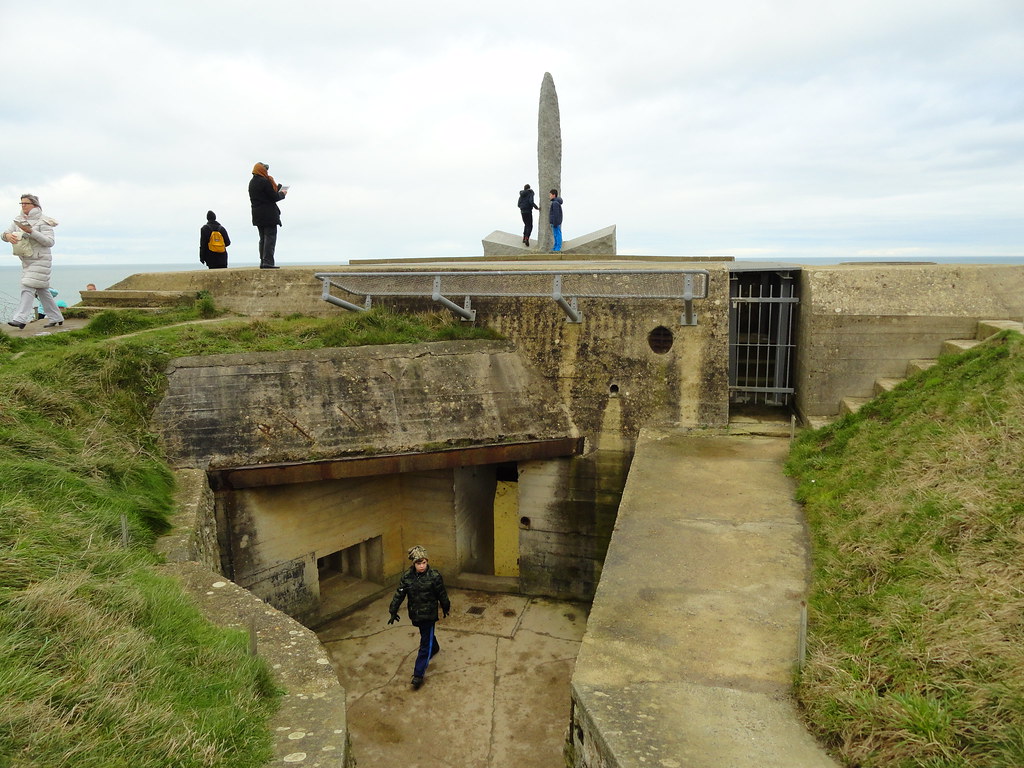Top World War II sights in Normandy
In 1944 Western Allies of World War II launched the largest amphibious invasion in history to the beaches of Normandy. The sites of bloody battles, cemeteries and museums provide today an imposing view to this darkest age of European modern history.

Pointe du Hoc
Pointe du Hoc is a promontory with a 30m cliff overlooking the English Channel. During World War II it was the highest point between Utah Beach to the west and Omaha Beach to the east. The German army fortified the area with concrete casemates and gun pits.
Read more about Pointe du Hoc
Utah Beach Museum
Utah Beach was the successful landing place of a number of American Divisions on 6th June 1944, and from here they pushed inland to the Carantan peninsula to meet up with US Airborne forces around St Mere Eglise. Between D Day and 1st November 1944 some 836,000 men and 220,000 vehicles came ashore here.
Read more about Utah Beach Museum
Mémorial de Caen
The Mémorial de Caen is a museum and war memorial in Caen, commemorating the Second World War and the Battle for Caen. The building and grounds are located in the northern suburbs of the city of Caen on the site of an old blockhouse.
Read more about Mémorial de Caen
Airborne Museum
The Airborne Museum (Musée Airborne) is dedicated to the memory of the troops of 82nd Airborne Division and 101st Airborne Division who landed in Normandy, by parachute or glider, on the night of 5–6 June 1944 hours before the Allied landings in Normandy.
Read more about Airborne Museum
American Cemetery and Memorial
On June 8, 1944, the U.S. First Army established the temporary cemetery, the first American cemetery on European soil in World War II. After the war, the present-day cemetery was established a short distance to the east of the original site.
Read more about American Cemetery and Memorial
Pegasus Bridge
Pegasus Bridge is a bascule bridge (a type of movable bridge), built in 1934, that crossed the Caen Canal, between Caen and Ouistreham.
Read more about Pegasus Bridge
La Cambe War Cemetery
La Cambe military war grave cemetery contains of 21,000 German military personnel of World War II. It is maintained and managed by the German War Graves Commission.
Read more about La Cambe War Cemetery
Bayeux War Cemetery
The Bayeux War Cemetery is the largest Second World War cemetery of Commonwealth soldiers in France. The cemetery contains 4,648 burials, mostly of the Invasion of Normandy.
Read more about Bayeux War Cemetery
Atlantic Wall Museum
Located at a stones throw from the beach and the Ferry terminal, the Atlantic Wall Museum (Le Grand Bunker Musee du Mur de l'Atlantique) is inside the old German headquarter which was in charge of the batteries covering the entrance of the river Orne and the canal.
Read more about Atlantic Wall Museum
Omaha Beach Memorial Museum
The Omaha Beach Museum describes the history of the D-Day Landings on Omaha Beach in Normandy on 6 June 1944 during World War II. Located on Omaha Beach itself, 300m from the beach the museum showcases a large collection of uniforms, weapons, personal objects and vehicles.
Read more about Omaha Beach Memorial Museum